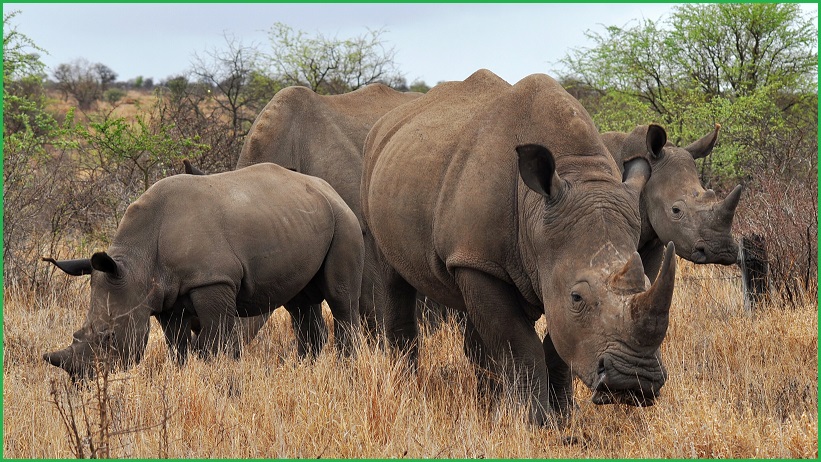Tracking a fleet of delivery vans around a metropolitan area is one thing, but how would you track hundreds of roaming rhinoceroses across a remote, semi-arid area the size of Newcastle – and make sure the endangered animals don’t stumble into the path of marauding poachers?
This was the challenge facing South African field guide Lukas Schefer – a former electronics specialist who moved to the country in 2015 and began his formal field guide training before founding Volunteering Africa in 2019 – as he worked to fulfil his dream of offering secure parks where wildlife could be protected from poachers.
That protection has become increasingly urgent, with over 8,454 rhinos killed by poachers since 2010 and just 27,000 estimated to be remaining worldwide amidst plunging numbers in critical areas like South Africa’s Kruger National Park.
Yet protecting the animals from poachers requires knowing where they are – and with more than 25,000 hectares under management, the task was far from simple.
“For a long time, the organisation used antennas and sound-based systems to localise the rhinos and make sure they didn’t step into dangerous areas where poachers would find it easy to act,” Schefer explained, “but this system wasn’t as effective as desired and only localised animals when they were close, after looking for them for several hours.”
Schefer tapped his electronics expertise to map out a way of tracking the animals using radio technology – and ultimately found a viable solution in wide area (LPWA) communications network technology, designed to connect Internet of Things (IoT) devices across a wide area.
As opposed to speed-focused 4G and 5G networks designed for devices whose batteries only need to last a day or two, LPWA networks are designed to carry sporadic bursts of data from remote devices with long-life batteries that can last months or years.
Their low-powered design is combined with relatively low-frequency spectrum capable of transmitting data over areas of up to 15km – enough to span the entire Volunteering Africa protection area, which covers a space similar in size to the city of Newcastle, NSW.
Working with Swiss IoT specialist Shop of Things, Volunteering Africa moved to fit the rhinos with Abeeway tracking devices that could be strapped around the animals’ ankles, and were strong enough to survive the day-to-day wear and tear that comes from being attached to one-tonne wild animals.
Catching and tagging the animals is tricky for the team, which needed to maximise battery life to minimise the number of times it would have to undertake the catch-and-release exercise.
That need was met by batteries designed to last up to 7 years, which keep the ankle-worn trackers in regular contact with monitors using a network of what will eventually be a dozen LoRaWAN towers spread across the area.
French firm Actility’s ThingPark Enterprise allows the devices to be tracked and managed in real time, enabling rangers to add more trackers as they locate and tag more rhinoceroses – and, over time, other types of animals.
Individual rhinos are being tracked using Akenza’s IoT platform, which analyses the data from the trackers and feeds relevant data to the EarthRanger application for access by protected area managers, ecologists, and wildlife biologists.
“Volunteering Africa continues working on ways to improve wildlife protection and will continue expanding this system throughout African parks,” Schefer said, and will “take the project to another level in the future by using this system to protect not only rhinos, but all other endangered animals.”
Drover and out
The success of the tracking project – which has already been credited with helping rangers intervene to prevent rhinos from being killed – reflects the growing utility of now ITU-standard LoRaWAN in remote areas, where communications are essential but devices need to respect the sparsity of infrastructure and the challenges of battery replacement.
Backed by the support of industry organisation LoRa Alliance, network operators have rapidly rolled out the technology in Australian cities and regional areas, with projects from local concerns such as Farmbot offering new help for farmers that struggle to co-ordinate herds of livestock, available water resources, food stocks, and more.
Last month, LoRaWAN operator NNNCo announced a new network covering 32,000 square kilometres was providing farmers with real-time access to IoT sensors including moisture probes, gate openers, silos, and more.
“The IoT trial is an opportunity for horticulture, dairy, sheep and cropping farmers to establish the technology best suited to their circumstances,” said Agriculture Victoria acting executive director for agriculture policy Dr Julie Simons.
“It will also allow us to share lessons from the trial with other farmers to help them better understand how investments in IoT technologies can assist their decision making and improve their operations.”










